Part of a series of articles titled Curiosity Kit: Zitkála-Šá.
Next: Learning from Zitkála-Šá
Article
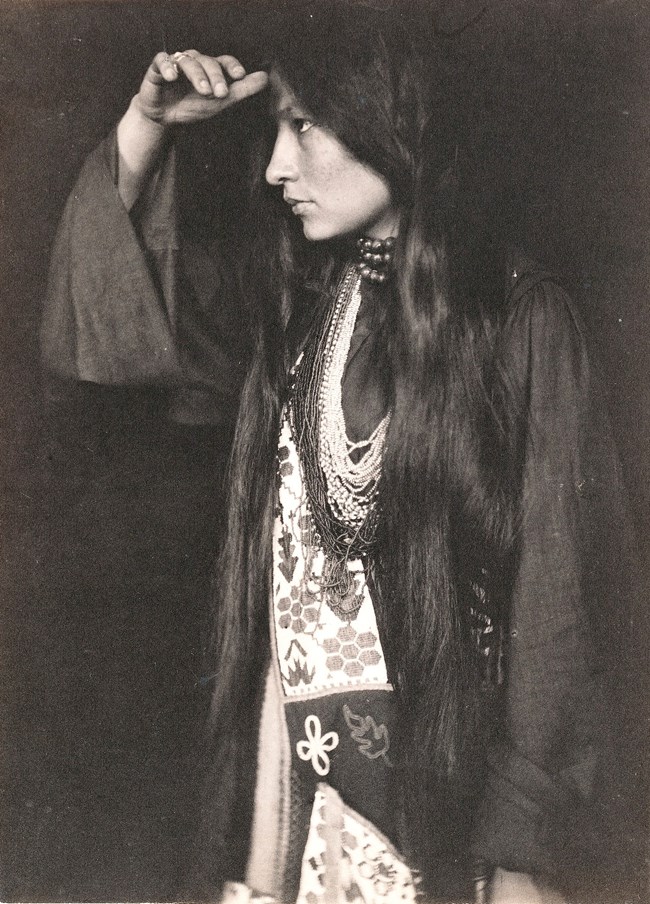
The content for this article was researched and written by Jade Ryerson, an intern with the Cultural Resources Office of Interpretation and Education.
Gertrude Simmons Bonnin was a Yankton Sioux lecturer, educator, and writer. Her activism supported Native American citizenship, voting rights, self-determination, and cultural recognition. She also wrote and worked under the name Zitkála-Šá (“Red Bird”). Zitkála-Šá served as the secretary-treasurer of the Society of American Indians. During the 1920s, she worked with the General Federation of Women’s Clubs (GFWC) and encouraged the organization to establish an Indian Welfare Committee. Zitkála-Šá also co-authored a report that exposed efforts by county governments and corporations to exploit Indian tribes. She testified at a Congressional hearing of the Committee on Indian Affairs about this report and the use of peyote among Native American communities. The report influenced the passage of the Indian Reorganization Act of 1934. Throughout the 1920s, Zitkála-Šá appeared before national, regional, and local meetings of the GFWC, the Penwomen's League, and other organizations. In 1926, she founded the National Council of American Indians to advocate for educational opportunities, reform legislation, voting rights. She served as the organization’s president until her death in 1938.
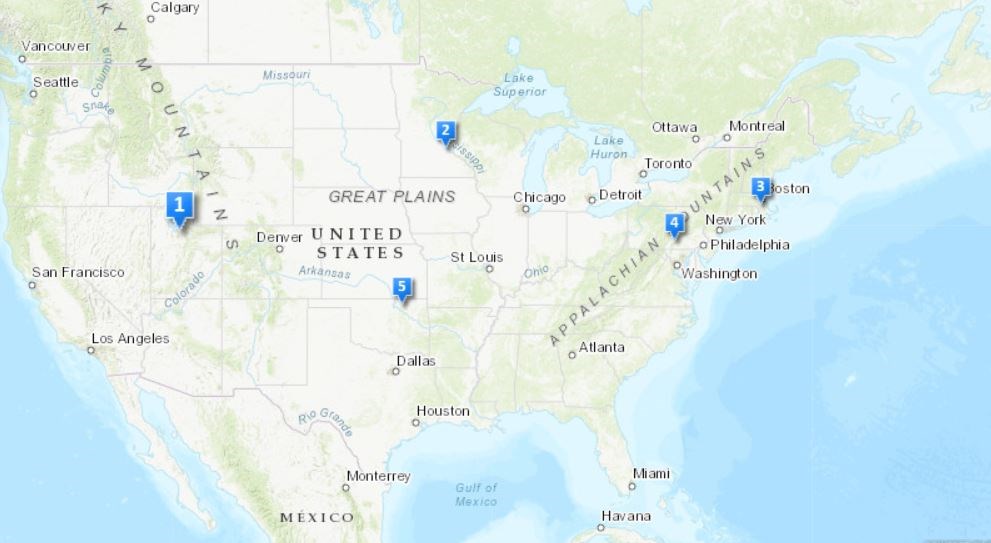
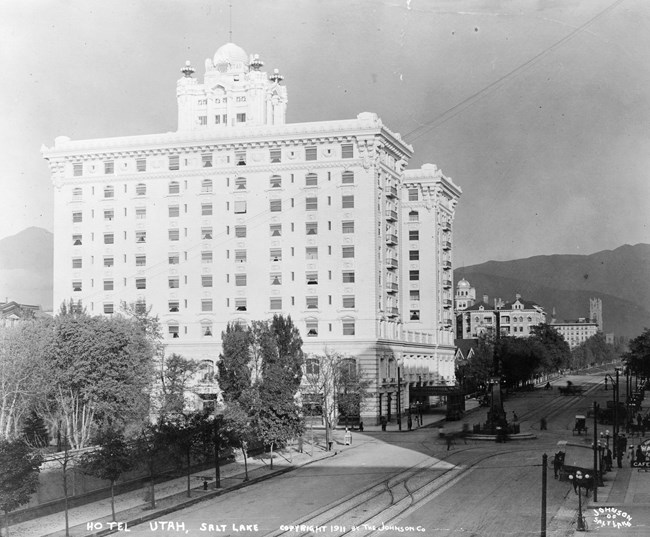
The General Federation of Women’s Club's held its Mid-Biennial Council meeting at the Hotel Utah in June 1921. Stella Atwood chaired the Division of Indian Welfare for California's women's clubs. She invited Zitkála-Šá to speak at the convention. In her address, Zitkála-Šá advocated for Native American citizenship. She also encouraged the GFWC to establish a national Indian Welfare Committee. She later served as a research agent for the Committee in Oklahoma. Zitkála-Šá also completed lecture tours across the country for the GFWC. Her speeches called for the abolition of the Bureau of Indian Affairs.
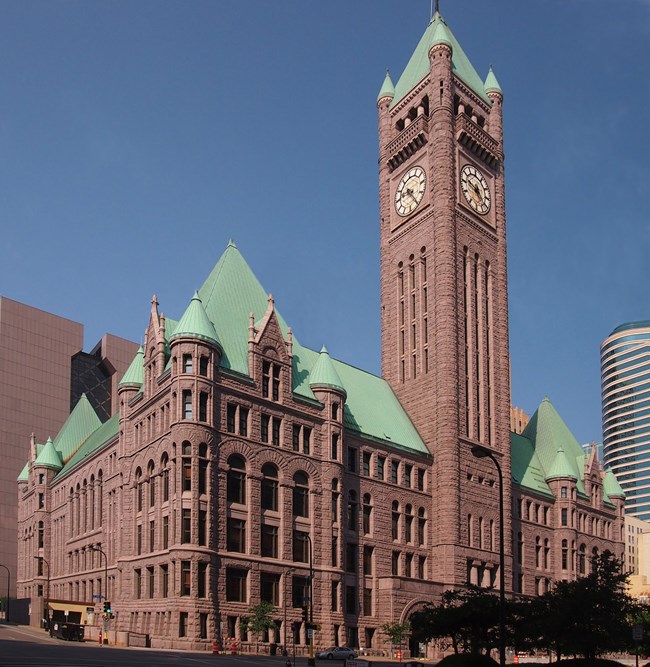
The Society of American Indians held its Eighth Annual Convention in October 1919. Convention attendees gathered for a session at the Minneapolis City Hall-Hennepin County Courthouse. The superintendent of the Minnesota Historical Society spoke in the building's Assembly Hall. At the convention, Zitkála-Šá promoted pride in Native American heritage and cultural traditions. She stressed that Indigenous women played an important role in raising future generations. For this reason, she urged that more women should attend future conventions.
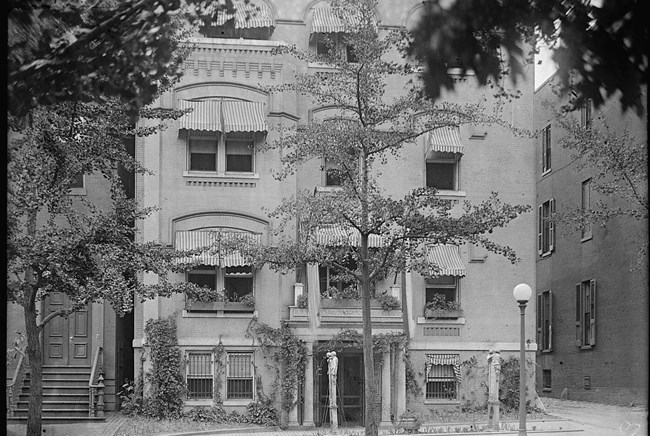
(includes NWP national headquarters between 1916 and 1921)
Zitkála-Šá spoke at the “First Convention of Women Voters Since Suffrage Passed” in February 1921. The National Woman’s Party (NWP) hosted the convention at its third headquarters in Washington, D.C. The building's facade is now 722 Jackson Place in Lafayette Square Historic District. At the conference, Zitkála-Šá expressed her enthusiasm for reinventing the NWP to combat legal discriminations against women and advance equal opportunity. She also advocated for reform legislation for Native American citizenship and voting rights.
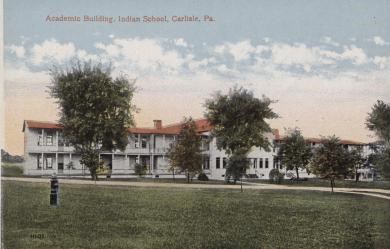
Zitkála-Šá taught at the Carlisle Indian Industrial School for two years. Between 1879 and 1918, the School enrolled about 10,000 students from over 141 distinct Indian nations. The School forced students to assimilate to Anglo-American culture. It stripped them of their names, languages, religions, and dress. Zitkála-Šá resented these practices and identified with her students' loss of cultural identity. She criticized the School's assimilationist efforts in autobiographical essays and short stories. To suppress her criticism, the School's superintendent sent Zitkála-Šá to the western states, where she recruited new students. Nevertheless, she continued to speak out and was fired in 1901.
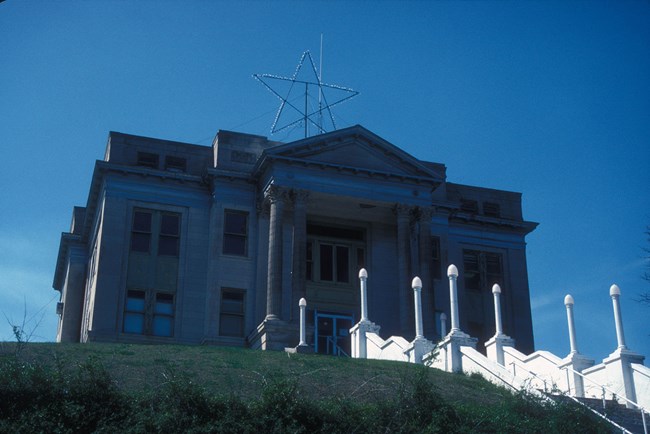
In late 1923, Zitkála-Šá worked as a research agent for the Indian Welfare Committee of the General Federation of Women’s Clubs. She spent five weeks in Oklahoma with representatives from other Indian advocacy groups. They investigated land mismanagement and probate claims. As part of the investigation, Zitkála-Šá attended a hearing at the Osage County Courthouse. In the case, two county governments conspired to evict an Indian woman from her estate. In 1924, the investigators published their findings in the report, Oklahoma’s Poor Rich Indians. The report exposed efforts by county governments and corporations to cheat Indian tribes out of leasing fees. Members of the tribes earned these fees from the development of oil-rich lands. Zitkála-Šá’s investigation influenced the passage of the Indian Reorganization Act in 1934. This act returned some lands to the tribes as communal property. It also supported self-governance and self-management of the lands.
Selected Sources:
Bonnin, Gertrude (Zitkála-Šá). “Address by Mrs. Gertrude Bonnin.” The American Indian Magazine: The Quarterly Journal of the Society of American Indians 7, no. 3 (Fall 1919): 153. Accessed April 30, 2020. https://hdl.handle.net/2027/coo.31924102392515.
Maddox, Lucy. Citizen Indians: Native American Intellectuals, Race, and Reform. Cornell University Press, Ithaca. 2005.
Zitkála-Šá. “America’s First Indian Problem.” American Indian Stories. Washington, D.C.: Hayworth Publishing House, 1921. https://hdl.handle.net/2027/wu.89098875883?urlappend=%3Bseq=9.
American Memory. “Historical Overview of the National Woman's Party.” Accessed April 28, 2020. https://www.loc.gov/static/collections/women-of-protest/images/history.pdf.
General Federation Clubwoman, June 1921. MAG 1921.06. Magazine Collection. General Federation of Women’s Clubs Women’s History and Resource Center, Washington, D.C. Accessed April 7, 2020. https://gfwc.pastperfectonline.com/archive/640E2332-9A0B-46BF-BF2D-360712024825.
Part of a series of articles titled Curiosity Kit: Zitkála-Šá.
Next: Learning from Zitkála-Šá
Last updated: September 2, 2022